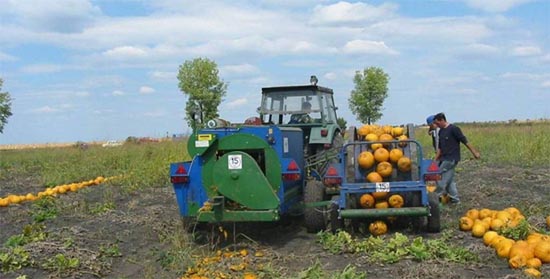
Land Reform in Dagestan Promises to Be a Rough Ride
Publication: Eurasia Daily Monitor Volume: 12 Issue: 70
By:

The outspoken governor of Dagestan, Ramazan Abdulatipov, has announced that land reform in the republic is imminent. At a recent agricultural forum in the village of Averyanovka in the republic’s Kizlyar district, Abulatipov said he had told his administration to prepare all the necessary documents for land reform in Dagestan within three months. The essence of land reform in Dagestan is privatization. Previous attempts at land privatization in the republic have failed, and 2012 was the last time a leader of the republic announced plans to privatize land in Dagestan. However, that leader, Magomedsalam Magomedov, was soon replaced by Abdulatipov (Kavkazskaya Politika, April 3).
Dagestan, like most of the other North Caucasian republics, did not allow private ownership of land. Land scarcity in the North Caucasus in general and in Dagestan in particular meant that the public rejected privatization. Historically, land was the only source of support for families in the region. Mountainous terrain made arable land even scarcer, hard to cultivate and a politically salient issue. Moscow decided to leave the explosive issue alone, particularly given that land in the North Caucasus was not an important national asset.
Over time, however, the unclear status of land became an obstacle to the economic development of the region rather than a conflict mediator. According to Russian economist Denis Sokolov, bureaucrats in the North Caucasus hid their de-facto privatization of land behind a formal ban on land privatization, which made the conflict over land potentially even more explosive (Vedomosti, September 15, 2010).
Abdulatipov’s views on the issue resemble those of economists. The Dagestani governor spoke in favor of land reform on local TV, stating: “First of all, there is no clarity about who is the proprietor of the land in a district, a city, a village. Secondly, no clear rules exist about land relations. Thirdly, these relations are not transparent.” The problem lies not only with agricultural land ownership, but also with land in cities. “Sometimes, distributing land plots is the primary activity of the mayors of the cities, which should not be the case,” Abdulatipov said. Privatization is expected to increase the efficiency of land use, yield higher revenues and help reduce corruption. The equivalent of almost $500 million in additional investments is expected if land is privatized. Dagestan has about 4.3 million hectares of agricultural land, of which only half a million hectares is arable land. The republic has an average of 0.17 hectares of arable land per capita in comparison to 0.86 hectares per capita on average in the Russian Federation. While arable land is so scared, an estimated 100,000 hectares nonetheless remain unplowed in the republic every year (Kavkazskaya Politika, April 3).
Unlike other republics, Dagestan has one additional hurdle to deal with in implementing land reform. The republic has dozens of ethnic groups that often claim ethnic rights over land. There is an ongoing dispute between ethnic groups that traditionally resided in the lowlands, such as the Kumyks, and highlanders who have moved from the mountains to the lowlands in search of opportunities, such as the Avars, Dargins and others. Dagestan’s ethnic diversity is probably not an obstacle to land reform in itself. Rather, because of ineffective state institutions, mutual distrust between ethnic groups is high and likely to manifest itself in one form or another during the reform.
Some experts already warn that three months is not long enough to prepare for land reform in Dagestan. “It will be hard to implement the program of reconstructing land relations given the demands of all sides [ethnic groups],” Ruslan Gereyev, director of the Center for Islamic Research in the North Caucasus, told Kavkazskaya Politika website. Reflecting the weakness of state institutions in the republic, Fadik Mugulov, leader of the Dagestani Association of Businessmen, said that “large scale problems that have amassed in land use in the republic cannot be resolved with this team even in five years.” Mugulov alleged that random prices were assigned to land plots and that government officials profited from artificially low or high land prices. However, Abdulatipov himself appears upbeat about the land reform he has proposed. As an example of success, the governor cited an increase in the number the taxable land plots in the city of Makhachkala, the capital of the republic, from 12,000 to 94,000 after the official in charge was replaced (Kavkazskaya Politika, April 3).
Hardly anyone in Dagestan opposes land reform, yet quite a few people outside the republican bureaucracy have expressed skepticism about viability of the reform. Even a compromise and a partial reform of land use in the republic would be welcomed by many. Still, the reform evidently faces serious challenges in its actual implementation. The state bureaucracy may not be ready to implement the reform as prescribed, and the republic’s ethnic groups may not be prepared to accept the reforms as prescribed. Compromises and adjustments will be needed, but Dagestan’s current government has shown few signs of being willing to make such compromises.




